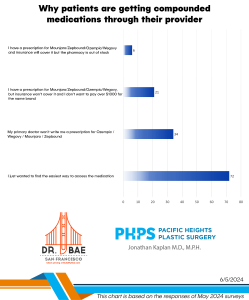 A recent Reuters article discusses the huge disparity in prices for common surgical procedures such as hip and knee replacement. The article highlights a study by Blue Cross Blue Shield that is self-serving to say the least. It points out how doctors and insurers charge high prices for these procedures and, depending on the facility, prices can fluctuate by up to 300 percent.
A recent Reuters article discusses the huge disparity in prices for common surgical procedures such as hip and knee replacement. The article highlights a study by Blue Cross Blue Shield that is self-serving to say the least. It points out how doctors and insurers charge high prices for these procedures and, depending on the facility, prices can fluctuate by up to 300 percent.
A similar article in The Washington Post published in 2013 addressed this issue as well. But before we go any further, it is imperative to understand that what a hospital charges Medicare/Medicaid or other private insurer is almost completely unrelated to how much the insurer reimburses that hospital for those services.
Let’s take a look at an example of a typical business transaction. A plumber provides a service to a homeowner. The plumber then charges the homeowner a certain amount, and the homeowner pays or reimburses the plumber for those services.
But it doesn’t work that way in healthcare. The hospital (or doctor) knows that Medicare/Medicaid, or whatever insurance company is involved, won’t pay the hospital what the hospital charged for services provided. Medicare/Medicaid pays the hospital based on a diagnosis related group (DRG) which is a “black box” of formulas that tell the government to pay X amount of dollars for a particular disease process or procedure.
The variations in what the government pays to each hospital are based on these formulas, which are too confusing to explain here. But briefly, the formulas take into account the complexity of the disease process, the potential costs of complications and even the cost of living in the area of the country where the hospital is located (i.e., higher reimbursement in New York City vs. Louisiana).
But there’s another element at play here that is not at play in the plumber’s example. If a homeowner can’t pay for the plumbing to be fixed, the plumber doesn’t fix the plumbing. It’s as simple — and inconvenient — as that. However, in healthcare, barring a few extreme examples, everyone can access the healthcare system through a clinic, emergency room, charitable organization, etc.
Healthcare is a right, and while the media likes to interview people who were turned away from an ER for a life-threatening emergency, everyone does in fact have access to care in a life-threatening situation. That means treating patients who don’t have insurance. But how do hospitals treat patients with no insurance (and no way of paying for services rendered)?
In an effort to survive, hospitals determine how much it costs them to treat a patient with insurance. They then multiply that cost by a factor of two, three or whatever number they think will help bring in enough money to help cover the costs of treating patients who don’t have any insurance. So they attempt to make more money on patients who have insurance in an effort to treat the uninsured, which is why you don’t see people dying in the streets.
This explains why a hospital charges more than what you’d expect for services — because they’re essentially raising the money from patients with insurance to cover the costs, or cost shifting to patients with no form of payment. The federal government knows this, so in an effort to stay one step ahead, the government doesn’t pay the hospital the charges the hospital submits, but rather pays them a predetermined amount (based on the DRG).
This lengthy explanation is all to say one thing: Just because a hospital or doctor charges a particular amount, doesn’t mean that’s what is paid out or reimbursed. While the study points to wide variations in prices charged, the reimbursement to the healthcare provider is substantially less than the bill.
The amount paid by the insurer doesn’t vary as greatly as the price charged by the facility. But showing what is paid isn’t as helpful to Blue Cross Blue Shield’s case as showing what’s charged. By releasing this study, the insurers aim to put the hospital and doctor on the defensive and suggest how they’re gouging the American people.
In fact, the insurance companies have raised premiums, shifted more of the responsibility to the consumer with high-deductible health plans and pay out lower reimbursements to healthcare providers. In other words, they’re increasing their profit margin. As a business, this is their right, but they’re being disingenuous.
In essence, the best way to provide price transparency to the public is not to show what’s charged, but what the consumer actually has to pay out of pocket, which is not the same thing. If the hospital knows you are paying out of pocket, they routinely provide an out-of-pocket discount. And once you meet your deductible, the insurance pays the rest.
If insurance companies want to highlight price gaps in the healthcare system, their income versus expenses is a great place to start.
Click here for the original blog post written by Dr. Jonathan Kaplan for BuildMyBod.




